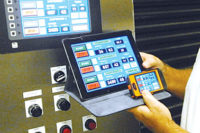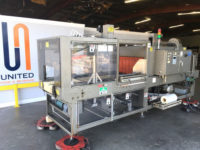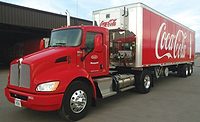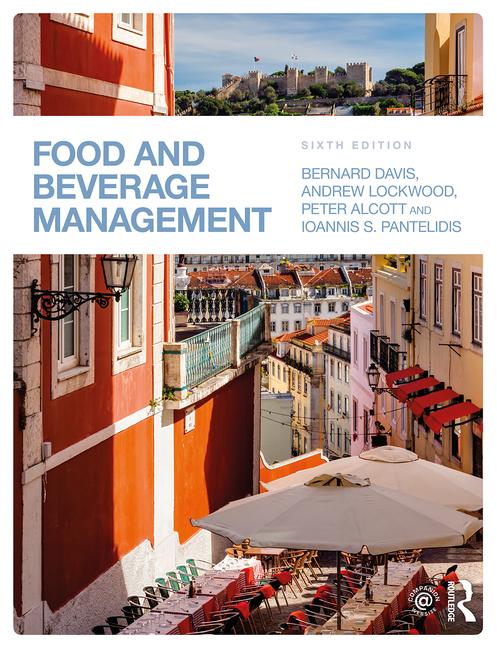Coding equipment meets marketing demands for beverage manufacturers
Laser coding capabilities catch up to continuous inkjet coders

Videojet’s 8610 continuous inkjet printer is equipped to print Data Matrix and quick-response (QR) codes. (Image courtesy of Videojet Technologies Inc.)

Domino’s new i-Tech A520i continuous inkjet printer features a modular design so that it can easily integrate into a variety of work environments. (Image courtesy of Domino North America)

In the past 10 years, laser coders have caught up with inkjet coders in terms of high-speed coding capabilities, says Matthews Marking Systems’ Dean Hornsby. (Image courtesy of Matthews Marking Systems)



In The Walt Disney Co.’s 2003 feature film “Pirates of the Caribbean: Curse of the Black Pearl,” lawless groups of sailors often remind each other to “keep to the code,” referring to the set of societal guidelines handed down by their pirate forefathers. In one scene, the pirate Captain Barbossa informs his lady hostage, who invokes the code to protect herself and her ransacked community, that one has to be a pirate for the code to apply, suggesting that it is more of a secretive, exclusive system. However, in the beverage industry, codes on packages are intended to do the opposite: They expose information to add clarity to the consumer packaged goods (CPG) system.
“Codes are used throughout the entire production process, from the empty container to point-of-sale and beyond, for numerous reasons,” explains Anthony M. Blencowe, business unit director for continuous inkjet (CIJ) at Wood Dale, Ill.-based Videojet Technologies Inc. “A beverage container will show numerous codes and inline prints — visible and invisible — on the container, the label and the cap, up to the wrap and multi-piece carton.”
These codes are used to communicate different pieces of information to different players in the supply chain but have become particularly important to consumers as well. In line with interests in health and sustainability, consumers are increasingly interested in supply chain transparency, because they want to know where their CPG products come from, according to Domino North America’s 2012 whitepaper “How stakeholders in the beverage industry are driving coding and marking solutions.” Equipped with code-scanning apps on their smartphones, consumers will scan barcodes and quick-response (QR) codes to learn more about the products they are considering purchasing, the Gurnee, Ill.-based company reports. Some apps even allow consumers to see price comparisons, test reports as well as health and sustainability information, it adds.
To make this information available to consumers, packaging professionals need to find ways to add multi-line codes and other high-resolution marks, like Data Matrix and quick-response (QR) codes, to packs without modifying the packaging design. To help meet these coding needs, Videojet released its Videojet 8610 thermal inkjet printer in June. The system uses methyl ethyl ketone (MEK)-based fluids and other fast-drying inks to print high-resolution codes on non-porous packaging materials, such as films, foils, plastics and coated stocks, the company says.
“The innovation inherent in the 8610 is our new industrial ink cartridge technology — a fully contained, high-resolution print cartridge designed specifically to jet MEK-based inks,” said Chris Riley, vice president of marketing for Videojet, in a statement. “The result is the ability to use fast-drying solvent inks, such as MEK, and still achieve clean, repeatable codes time after time.”
MEK inks typically have a dry time of 1-2 seconds, according to Guy Bradford, inkjet product manager for Fort Worth, Texas-based ID Technology, a division of Pro Mach.
In addition, Videojet’s 8610 offers near-letter-quality printing with excellent edge acuity, which helps with printing high-resolution marks on challenging substrates, the company adds.
Steering straight
Although some shoppers might not stop to scan these high-resolution codes to read a product’s backstory in the supermarket, many will look to packaging codes for pertinent information, like expiration or “best before” dates. This information remains important throughout the shelf-life of the product, as consumers check the date on the label before drinking or purchasing the beverage. Although this information is most pertinent for more perishable beverages, like some juices and dairy-based drinks, it also is important for low-calorie sweetened beverages, notes Dean Hornsby, director of business development for CPG markets at Matthews Marking Systems, Pittsburgh. Consuming the products before the “best before” date avoids bitterness in taste and consumer dissatisfaction when the sweetener expires, he says.
Other consumers eagerly check packages to see whether they have won a prize in a brand’s promotion. Here, codes are used to communicate marketing materials, like prize codes or other gaming codes and even website promotions, Videojet’s Blencowe says. In addition, some multi-lingual ingredient lists are printed in small batches using coding equipment, he notes.
To handle the differing data requirements for individual “best by” and marketing codes, as well as for the different products brought to market through SKU proliferation, packaging professionals need ways to manage all of this data and efficiently handle changeover from one product or code to the next. This is where data technology comes into play.
“Most beverage companies run multiple SKUs that require different codes or placements onto the package,” Matthews Marking Systems’ Hornsby says. “Matthews Marking Systems’ coders allow for the storage of SKU-dependent job files so that when a SKU changeover occurs, so does the code placement. This eliminates the need to re-tool the printing equipment for the SKU changeover.”
However, in managing all of this data, errors can happen in the coding process, resulting in incorrect codes or skewed code placement, according to Videojet. The company surveyed a variety of CPG manufacturers with fast-moving production lines and found that all had experienced coding errors. The survey showed that nearly half of the companies were experiencing coding errors at least once a week, and one quarter of the companies reported errors at least once a day. In these situations, coding detection systems can be implemented to identify errors before the products are released into the supply chain, thereby saving time, money and rework while protecting the brand’s reputation, the company says.
Previously, codes often were checked manually and at random to ensure code integrity. Now, coding equipment can help packagers reach a new level of code assurance by automatically checking every product for the presence of a printed code.
For this purpose, Videojet offers its Videojet Code Detection System, which inspects inkjet codes on white or light marking windows and verifies that codes are present, readable, complete and properly aligned. Users can set a threshold for a code to be considered unacceptable and set a limit for the number of bad codes that can be detected before a fault is indicated. When this quota of bad codes is reached, the system can automatically eject the product or stop the production line so that users can take corrective actions, the company says. The system also stores bad code images so that users can identify the root cause of the printing errors and quickly fix the production line, it adds.
Marking the spot
In addition to ensuring that the printed data is correct, packagers also have to choose the right coding technology for printing on a packaging substrate.
“For primary coding of bottles, cans and cartons, no single coding technology dominates, but inkjet and laser are the typical equipment of choice for drink producers,” say Domino’s Douglas Thompson, global marketing director, and Bill Bonaccorsi, director of marketing.
Traditionally, inkjet has been the more commonly used method of the two, because it can print a contrasting mark onto a variety of substrates at high speeds, Matthews Marking Systems’ Hornsby explains. It is especially suited for returnable bottles, where codes need to be removed and printed again, he says.
Continuous inkjet (CIJ) printers use solvent-based inks, including MEK and acetone, which have an almost immediate dry time on non-porous substrates, ID Technology’s Bradford adds. “The inks are already dry before the product is handled, eliminating the risk of illegible codes or loss of mark integrity before the product is packaged for shipment,” he says. With this quick dry time, CIJ printers can process as many as 1,700 containers a minute, ID Technology’s Bradford says.
Different inks can be formulated to achieve the best printing, contrast and readability for various substrates. Domino Printing Sciences plc, the parent company of Domino North America, released earlier this year a new 2YL912 yellow ink for its A-Series of CIJ printers. “Everyone knows that yellow ink in CIJ can be problematic, but we have used our knowledge and developed the new addition as a simple solution for coding onto dark or black surfaces,” said Nick Plaister, product manager for CIJ at Domino, in a statement. The ink is ideal for a wide range of challenging applications, has a 12-month shelf life, and is stable at temperatures as high as 113 degrees Fahrenheit, the company says.
However, in the past 10 years, lasers, which do not use inks at all, have caught up with the ability to code at high speeds, Matthews Marking Systems’ Hornsby says. “Lasers are replacing inkjet installments at a rapid rate, and soon enough, laser coders will be the dominant technology for the beverage industry,” he predicts.
Laser technology offers high-speed, permanent coding without the need for consumables, which reduces costs and down time for switching ink cartridges, Hornsby says. Although Domino’s Thompson and Bonaccorsi note that lasers do not offer the same level of contrast on a substrate as a CIJ coder can, Videojet’s Blencowe says that, by manipulating the laser’s wavelengths, laser coding equipment can achieve suitable contrast for different types of substrates. In addition, smearing is never a problem for laser printers, as no ink is used, Matthews Marking Systems’ Hornsby says.
This technology has proven to be popular for high-volume, high-speed, low-cost applications, like PET bottles, the Domino team adds.
Regardless of the coding technology selected, packaging professionals need to ensure that the equipment will fit into their supply chains and withstand the beverage-producing environment. To address these production line needs, Domino released in May its new i-Tech A520i CIJ printer, which is suitable for wash-down and harsh environments. It offers Ingress Protection (IP) 66-rated sealed electronics, low total cost of ownership, as well as a modular design that makes it easy to integrate into a variety of work environments, the company says. In addition, the printer’s high-speed head options can further extend its capabilities to match the highest-speed bottling and canning lines, it adds.
Coding technology also has to be able to mark codes on the proper spots on the packaging. “A beverage container today would show codes on the cap, the shoulder, the label and the bottom,” Videojet’s Blencowe says. To accommodate codes printed on multiple different positions, Videojet’s CIJ printers are equipped with a flexible, robust umbilical and easy-to-integrate head geometry to quickly move between lines, he explains.
With these factors in mind, packaging professionals can prepare their packaging lines to integrate the proper coding equipment that can print legible codes and share important product, tracking and expiration information with consumers and supply-chain professionals alike.
Looking for a reprint of this article?
From high-res PDFs to custom plaques, order your copy today!













